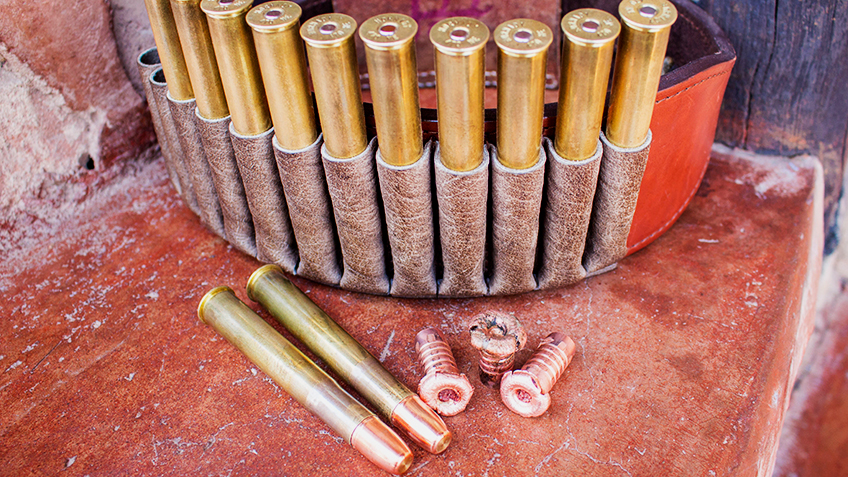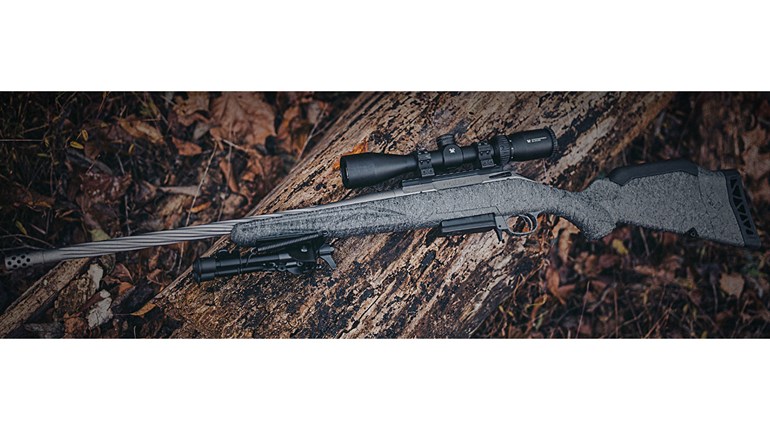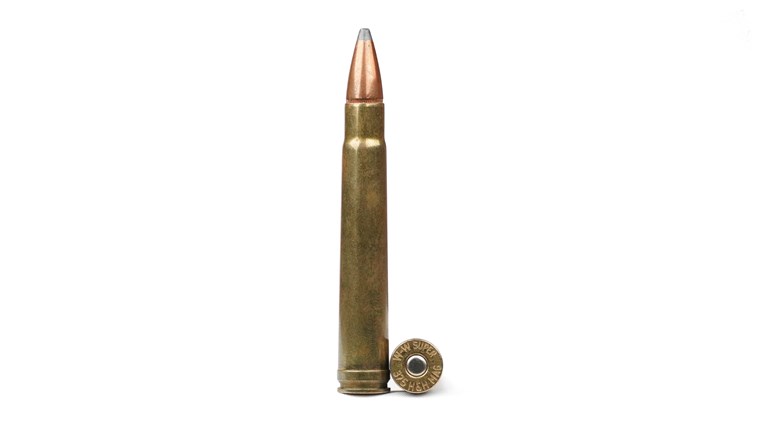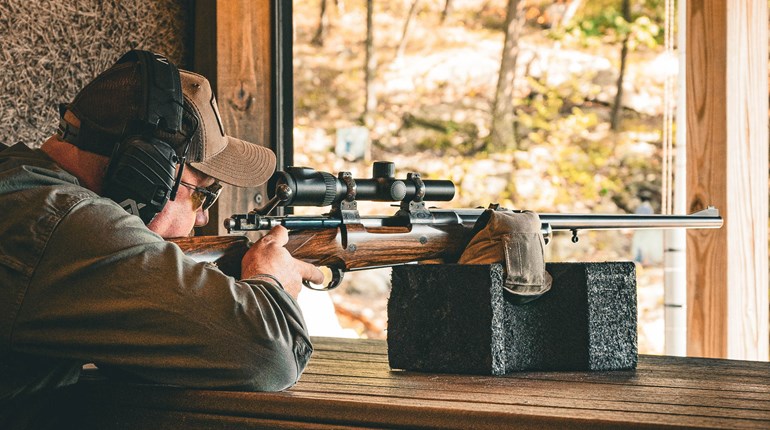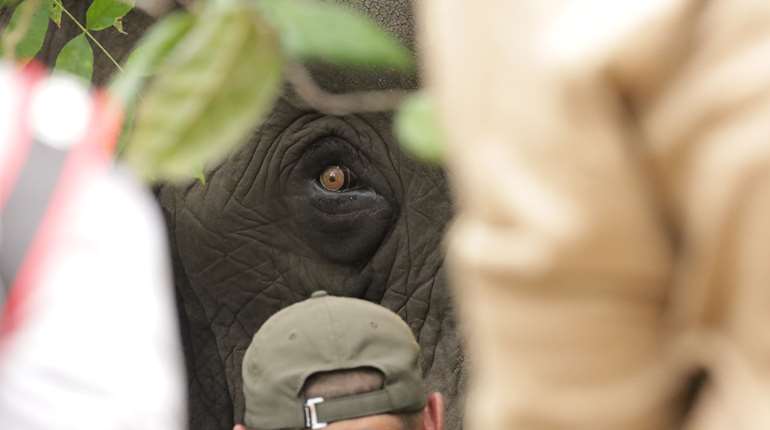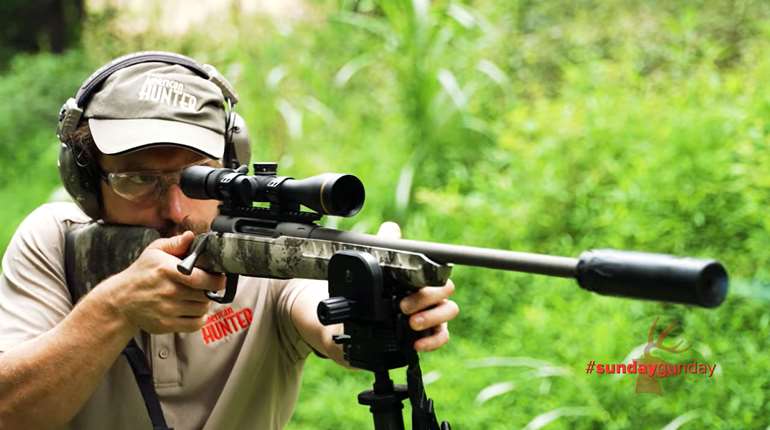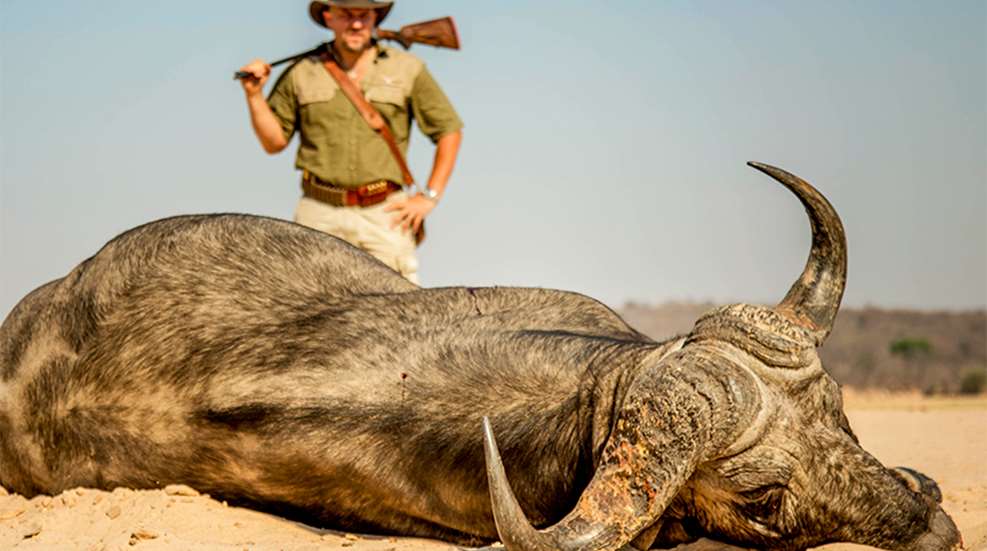
“The Sengwa River is a river in Zimbabwe,” according to Wikipedia. “As of 2012, this river is now dead.” That statement, from a hydrologist’s viewpoint, may be true, but in my experience it couldn’t be any further from the truth. The Sengwa River may lack water, but it is, nonetheless, teeming with life. Elephant, buffalo, leopard and lion, kudu, waterbuck, impala and bushbuck—all drink from the remnant pools. All inhabit the thick riverine vegetation that borders the Sengwa’s sand riverbed. The Sengwa also happens to bisect the Chirisa Safari Area, a hunting block with a great reputation, at least until recently. When I mentioned to friends and colleagues that I’d be hunting Chirisa, they all had the same sort of deflated look, as if I’d booked a hunt on the moon. The refrain I heard: “Chirisa is shot out; there’s nothing left there.”
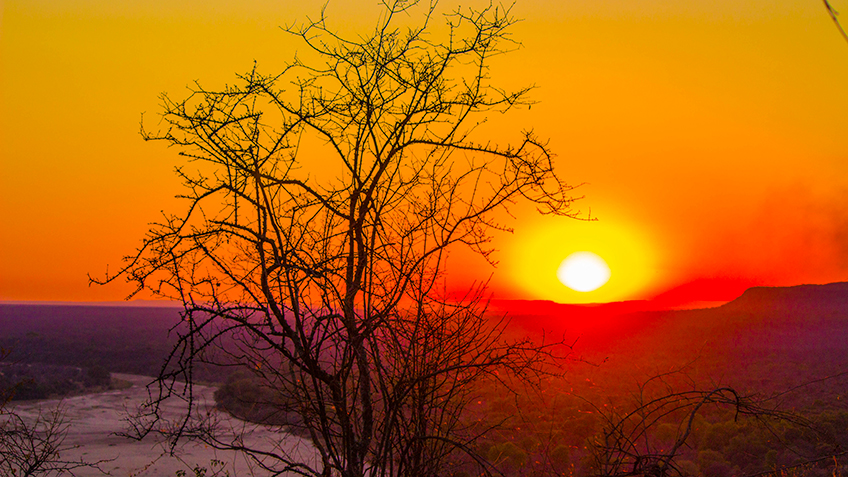
Brian van Blerk, a Zimbabwean professional hunter with an impeccable reputation in not only his native country but Tanzania as well, assured me the reports were unfounded. “Phil, the block has been taken over by new operators, and I promise they’re doing the right thing to bring the block back,” he said. “You’ll see once you get here. We’ll have a great time.” That put my mind at ease, as Brian and I have spent time together at the hunting shows, and I know him well enough to know he doesn’t lie. So, we booked a seven-day buffalo/plains game safari for me and my wife, Suzie, and my good pal Mike McNulty.
It was certainly not my first time hunting buffalo, but I’d take along a pair of rifles that are very special to me: my Heym Model 89B double rifle in .470 Nitro Express and a custom Gew. 98 Mauser, customized by Hillbilly Rifles in Vermont, chambered for the classic .318 Westley Richards. These two rifles and cartridges would be as equally at home today as they would’ve been a century ago, and our modern bullet/powder technology only makes them better. The Heym double would be iron-sighted—offering a unique challenge—and the Mauser would wear a Leupold VX-3i 1.5X-5X-20mm scope, for a combination that would handle anything from grysbok to elephant.
Ammunition was loaded and proven at the bench, forms were filled out in triplicate, airfare booked and the long journey from Upstate New York to Bulawayo, Zimbabwe, began. First leg was JFK to Johannesburg, South Africa, then a short commercial flight to Bulawayo. Once through Zimbabwean Customs—a simple affair aided by agents eager to help the process—we met Malcolm Ambrose, one of the owners of Sitatunga Safaris who runs the Chirisa block, for the drive into camp. We were jet-lagged and red-eyed, but the long trip to camp was no issue, as the promise of hunting the next morning dangled just in front of me.
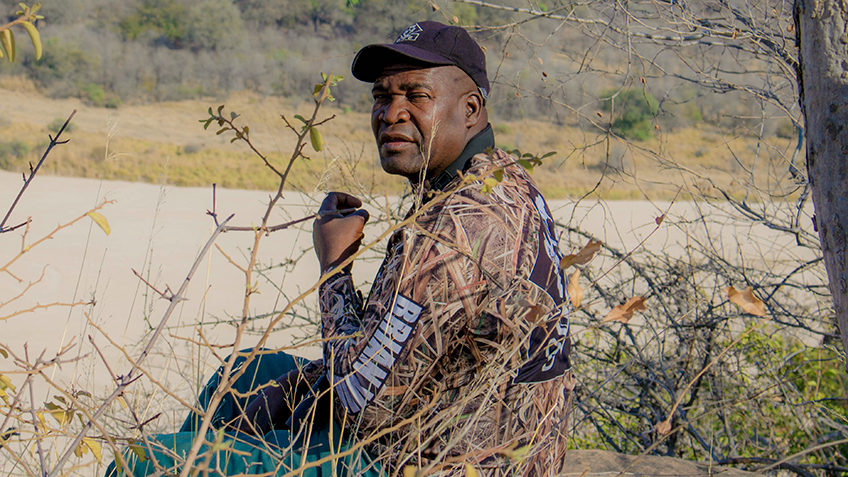
We rolled into the Chirisa Safari Area just after dark, and after 32 kilometers of bouncing down the sand roads were greeted by Brian van Blerk, PH Adam Goosen (who would be hunting with Mike McNulty) and the rest of the safari staff, including the other operators from Sitatunga: Goldwater Lukuta and Malcolm’s brother Floyd Abrose, who handed me a proper gin-and-tonic. Hands were shaken, names exchanged and gear stowed into the comfortable chalets, and after dinner we got down to the business of discussing the next day’s hunting plan. “We’ll have to register you guys at the Parks Office, check the rifles and then we’re off to hunt buffalo,” BVB quipped, ”so let’s have one more by the fire and get some rest.” After 32 hours of traveling, I had no energy to argue.
It was in the morning when I finally realized the splendor of the setting: the Chirisa Camp sits on a high bluff, with a 180-degreee view of the Sengwa River. Mouth agape, I stood dumbfounded as I glassed from one side of the vista to the other, spying elephant, kudu, impala and more, and I hadn’t even had a cup of coffee yet. The sandstone cliffs on either side of the river gave way to mopane trees and jesse thickets. The screams of the baboons and other monkeys echoed down the riverbed. Chirisa was full of promise that morning, as it would be every morning thereafter.
We loaded up the cruiser, where I met my trackers for the week: Albert Ndlovu and his son Proud, who make an excellent team. Albert, a mountain of a man, brings the wisdom and experience, and Proud brings the keen eyesight and enthusiasm of youth. I showed the crew my rifles for the hunt, and after the approving nods, we put lead on cardboard. The .318 printed just fine, but the .470 shot high and to the left, enough to worry me. I then recalled that I’d oiled the bores for the trip, and once shot clean, the following pair of bullets landed just where they were supposed to. Once registered at the Parks Office, BVB and I began searching for tracks.
Heat, Thirst and Buffalo
Chirisa proved to hold much more game than anyone had believed; BVB was indeed correct. Each and every day we’d cut fresh spoor, and most times we’d see—even if briefly—the buffalo, but the 110-degree heat and associated swirling winds proved to be more of an adversary than we’d realize. Down to the river to check the waterholes, through the riverine, into the jesse, up the cliffs, rinse and repeat. By 11 a.m. the heat would become oppressive, so if camp were within range, we’d head back for lunch and a nap.
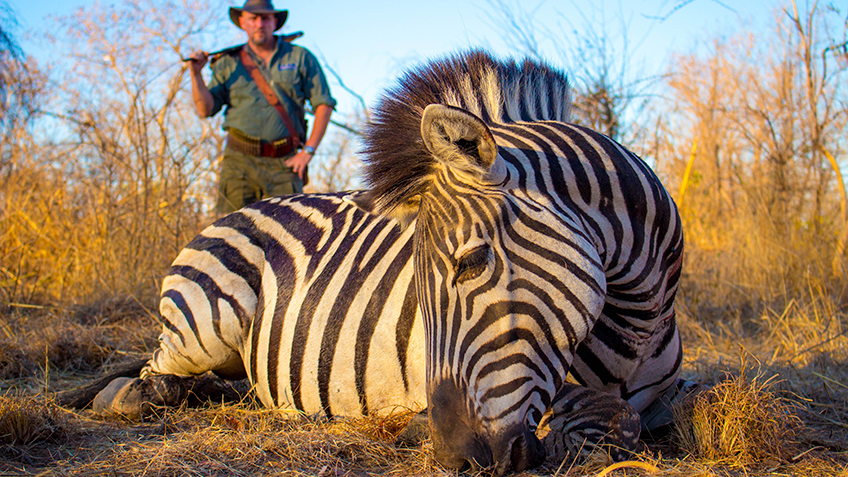
I had a couple plains game species on my wish list, namely zebra, Sharpe’s grysbok and kudu (always kudu), and we planned to take them as the opportunity presented itself. One day after lunch, we spotted a very large kudu from camp—I estimated him at 57-58 inches—and we drove off to make a concerted effort to relieve him of all that weight on his head, but drew a blank. We redeemed ourselves later that afternoon, when those cursed winds spooked the buffalo again, and we came across a pair of zebra stallions. The wind was generally in our favor, and the zebra stood about 75 yards off, gently feeding. The stallion we wanted was to the left, and positioned himself in the tawny grass, behind the only shrub in sight, for what seemed an eternity. We’d gingerly reposition the sticks, and he’d turn to keep that bush between us—and so it went back and forth, forth and back. An opportunity finally arose, and the .318 Westley Richards sent a 250-grain Woodleigh onto the point of his shoulder, where the stripes make that triangular pattern. He went no farther than 20 yards. Standing over that stallion, with his unique stripe pattern and a jet-black stripe running perfectly down the center of his back, was quite an honor, and I took a moment to reflect on both the stallion and the rifle I’d had built just for safari.
Evenings in camp were a delight. Wellington would meet us at the Cruiser with a hot towel to wipe the veldt off our faces and hands. The drinks and appetizers—ranging from biltong to (my favorite) popcorn—helped cut the dust. Dinners were fantastic, usually including game meat in some fashion or another, followed by a dessert to die for. We’d share a drink or two after dinner, make our plan for the morning—usually checking one or more waterholes for fresh buffalo spoor—then head off to bed.
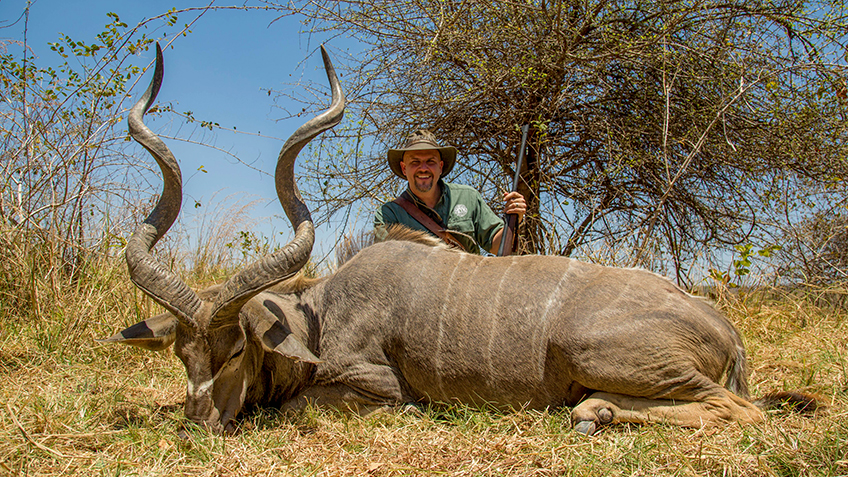
The hunt wore on, with some stalks ending in spooked buffalo and others ending in a herd with nothing but young bulls. I got to know the roads and trails throughout Chirisa; the river trail that turned west by the strangler fig tree; the crossing of the river where we got the truck stuck and had to cut small branches to give us some traction in the talcum-powder sand; the baked-clay trail through the stunted mopane trees the elephants had sheared off head-high, leading to the cathedral mopanes that looked like classic Africa. All became friends. The hope of buffalo lay around every corner, but time was ticking.
On the return to camp for lunch one late morning, I was nodding off in the front of the Cruiser when the trackers and BVB became startled: a large kudu bull had crossed the road, and they killed the motor immediately. A short stalk resulted in a true gift: a Texas heart shot on an old bull. I broke the trigger of the .318, and 75 yards later I stood over a majestic, 55-inch kudu bull, exchanging the three-part African handshake with the entire crew and enjoying the beaming smile of my wife.
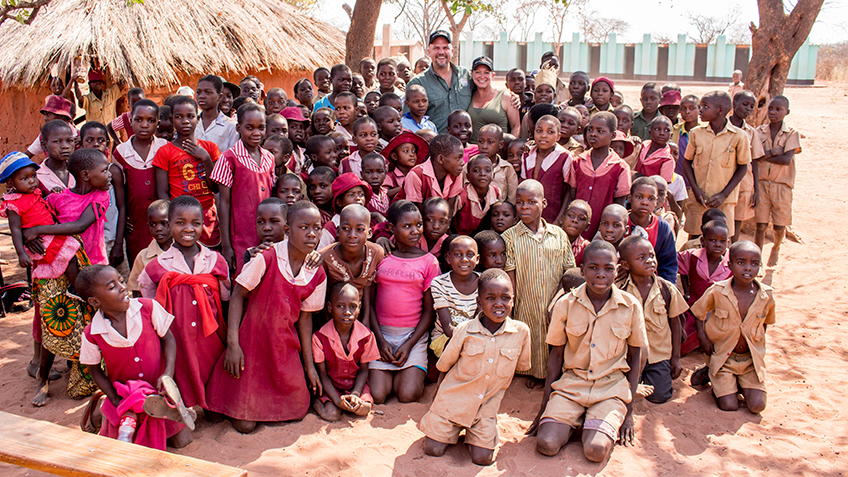
More tracking, more swirling winds, more blown stalks and the week wore on, until the last day of the hunt—which just so happened to be my 47th birthday. The afternoon faded until the sun approached the escarpment across the Sengwa, and we all assembled on a beautiful promontory of rock known as Smith’s Point, 200 feet above the river. The folks at Sitatunga Safaris made a gorgeous birthday cake for me, replete with orange and black frosting in an African animal theme, and topped with a frosting copy of the picture of me and my kudu. The trackers and scouts from both teams sang an excellent rendition of “Happy Birthday,” and we reflected on a great week. Mike had taken his buffalo, a tuskless elephant and an ancient bushbuck (I was able to personally donate the dried meat to the students of the local Muroorwa Primary School), and I was more than happy with my kudu and zebra. But Brian van Blerk isn’t the type of hunter to admit defeat easily. Though I assured him I knew we had made every concerted effort to get our buffalo, he leaned over during after-dinner drinks and simply gave an order. “You don’t drive out of camp until 11 or so tomorrow; we’re going out in the morning for one last crack at them.”
Overtime
I saw the wisdom of Brian’s plan: We would overnight in Bulawayo and I could literally throw my belongings together and repack in town. But the next morning, as I kissed my wife and grabbed the .470 and my gun belt for one last try, I had to admit 4:45 a.m. came quickly.
We took the familiar road down to the river crossing, and once on the sand, cut spoor of a fresh herd crossing into the tall grass on the west side of the Sengwa. The trackers separated on the track on that far shore, and then we saw the herd, lying and chewing cud, not 200 yards away. However, they also saw us. BVB immediately ducked into the thick bush, and set off at a dead run down the elephant paths in an effort to get ahead of them. Twice we peered out of the vine-covered vegetation to see the herd trotting past. On the third occasion, we saw them slow and begin to feed, about 150 yards away through the grass. Brian then switched to crawling mode, to give me the full effect of African gymnastics. Finally, as my heart pounded and my knees bled, and as sweat rolled into my eyes, BVB pulled up to glass the herd. “There’s a good bull in there, but they’re 124 yards out,” he said as he tapped his rangefinding Leica bino. “Let’s try to crawl a bit closer.”
We crawled to within 80 yards, when BVB pulled up and uttered the phrase that was music to my ears: “Take him!”
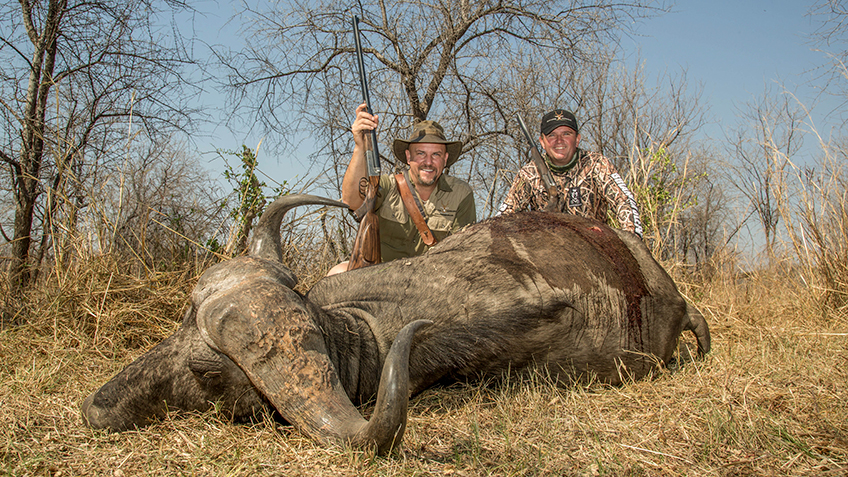
The bead of the Heym 89B settled on the bull’s shoulder and the right barrel barked. The buffalo dropped to the shot, bellowing immediately. The herd, in the confusion, stood around and the impossible happened: Brian said, “There’s another; take him, too.” The left barrel spoke, and the second bull took the bullet hard before trying to take off with the herd. Out on the sand river, I had to finish the bull offhand, at more than 150 yards, but got the job done. Miraculously, Brian van Blerk had led me to a brace of buffalo at the last possible minute, and the congratulations from the team were sweeter than anything I’ve yet to experience in the hunting world. A double, with a double: It doesn’t really get better than that.
The Future of Chirisa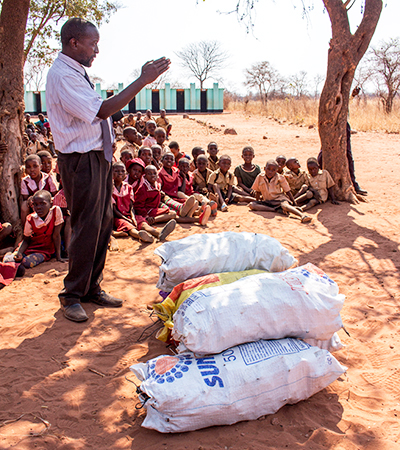
Sitatunga Safaris has taken a long-term lease on the Chirisa block, and plans to handle it properly. The block, under other management, had a buffalo quota of 44 animals—simply too high for the area. Sitatunga has reduced that number to eight. Keeping quota numbers low ensures trophy quality will be excellent.
Is Chirisa shot out? Absolutely not. I saw large herds of elephant, tracks of leopards and a plethora of plains game in addition to the multitude of buffalo we hunted each day. Sitatunga Safaris also has developed a wonderful relationship with the surrounding communities; I had the opportunity to visit the Muroorwa School and donate much of the meat from our safari to the 500 students enrolled there. Sitatunga has pledged not only meat for daily nutrition, but to help provide desks and other necessary materials. This company is good for not only the wildlife within Chirisa (by lowering quota numbers and running anti-poaching) but for the people around the block as well. Chirisa is a good hunting block now, and will be an incredible hunting block in the near future. Chirisa is indeed a paradise, once lost, but now found again, and in the hands of good stewards. For more information, visit sitatungazimbabwe.africa.
Gear for the Bush
For this hunt, I chose a classic pair of cartridges, the .470 Nitro Express—loaded with 500-grain Peregrine softpoints and 500-grain Trophy Bonded Sledgehammer solids—and the obscure .318 Westley Richards—loaded with 250-grain Woodleigh Weldcore softpoints.
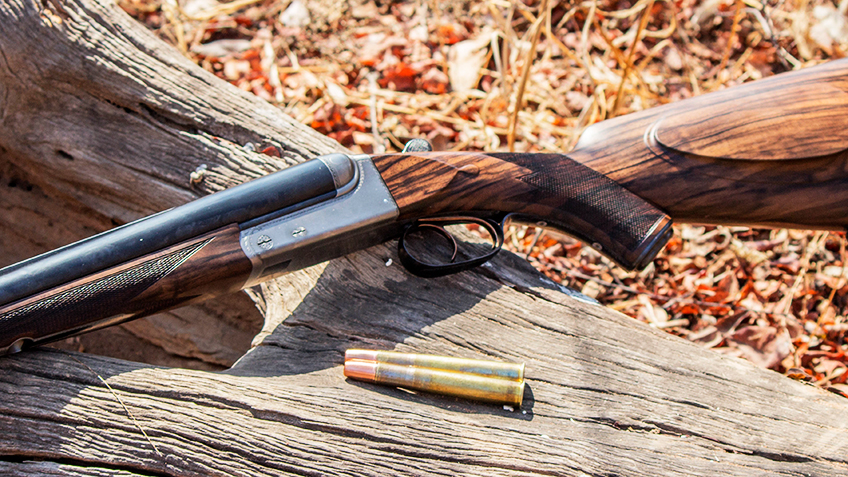
The .470 is a Heym 89B double rifle, made for me personally. It fits like a glove and shoots like a dream. Using an iron-sighted rifle for buffalo will definitely reduce the shot opportunities, but for those who enjoy the up-close-and-personal experience this is about as good as it gets. Loaded with Alliant Reloder 15 powder and a Kynoch foam wad, the target velocity of 2150 fps is easily reached with a significant reduction in recoil.
The .318 Westley Richards is a classic, being the all-around African cartridge even before the .375 H&H Mag. held that title. Using a .330-inch-diameter bullet of excellent sectional density at 2475 fps, the .318 will handle any plains game, including eland, as well as lion and leopard.
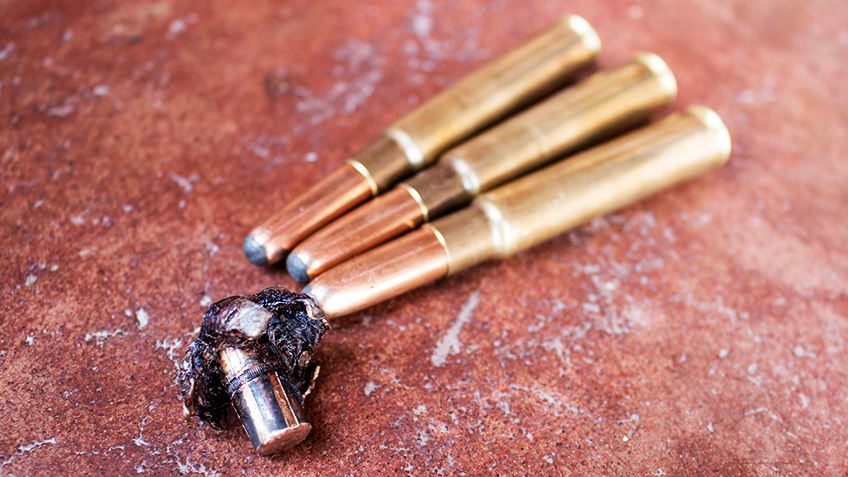
I feel the pair is highly complementary, and for those who enjoy the nostalgia of African cartridges, these two are definitely classics. My tracker Albert carried my .318 while I carried the .470. When we encountered plains game, we’d simply exchange rifles.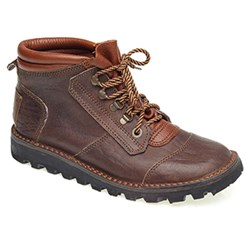
For boots, I donned my old Courteney Safaris, made of buffalo hide. The tire-tread sole is quiet, and offers good traction in the sand and on the sun-baked clay. SmartWool socks prevented blisters, even when the heat ramped up and the odometer showed more than 12 miles on our feet. MSRP: $295, courteneyboot.com; $19.95-$34.95, smartwool.com.
My cartridge belt was from African Sporting Creations. Buffalo-hide loops held the .470s neatly in place, and a secondary holder kept five .318 cartridges at the ready. MSRP: $199; africansportingcreations.com.
